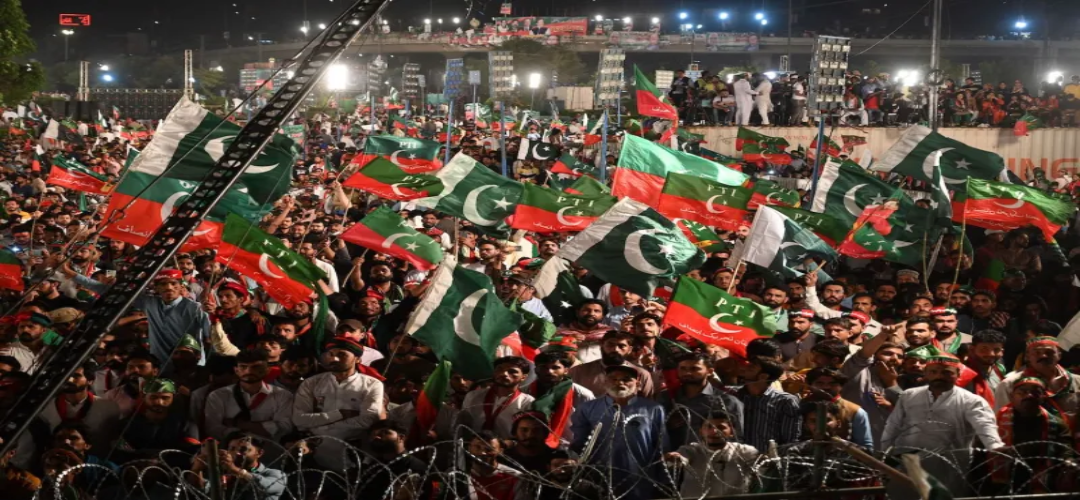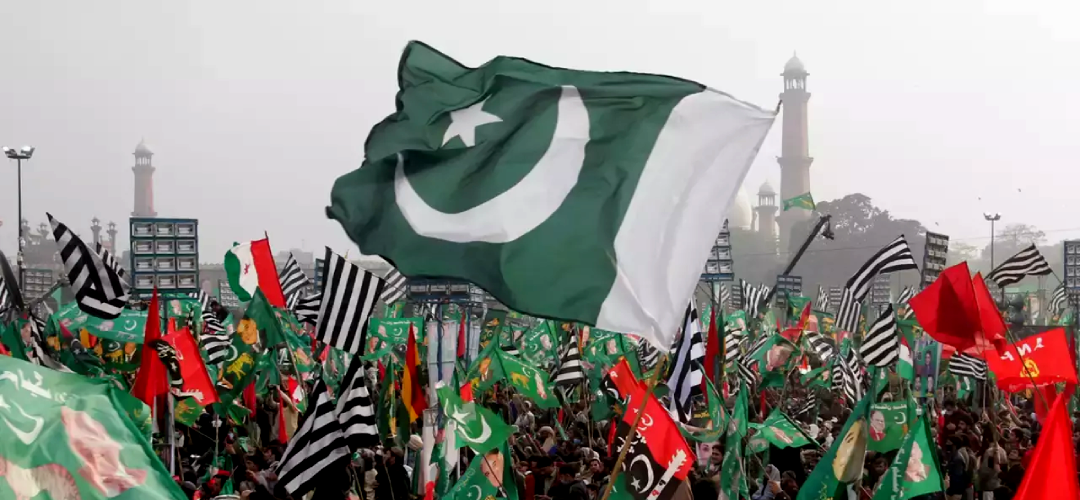Pakistan: PDM 2.0 Prospects
April 6, 2024 | Expert Insights

The Pakistan Democratic Movement (PDM), an alliance of more than a dozen parties, ousted Imran Khan in 2022 to form the government. A similar coalition, referred to as PDM 2.0, was recently formed to sidestep Mr Khan’s party and form a government in Pakistan.
Yet, not only are its legitimacy and longevity in question, but it also faces sizable challenges on the economic and foreign policy front.
Background
In a surprise result, jailed former Prime Minister Imran Khan’s party won the most seats in Pakistan’s parliamentary elections earlier this year. Mr Khan’s Pakistan Tehreek-e-Insaf (P.T.I.) gained more seats than the military-backed Pakistan Muslim League-Nawaz (P.M.L.N.) led by the three-time former prime minister, Nawaz Sharif.
The surprise PTI victory upturned the military's expectation of an easy win. Not only was it preceded by generals jailing Mr. Khan and candidates allied with his party, but it also came amidst accusations that the incumbent military-backed government had engaged in rigging.
However, the tables soon turned: since the PTI fell short of a majority, the Pakistan People’s Party (PPP) reached a power-sharing consensus with the PML-N to stitch together a coalition government.
Mr. Khan, a populist leader, was ousted from power in 2022 through a no-confidence vote, convicted for multiple crimes, and banned from contesting the elections. The previous PMLN-led coalition or PDM that replaced him was unpopular and came under flak for being unable to address the economic crisis and record-high inflation.
In PDM 2.0, Shehbaz Sharif, brother of Nawaz Sharif, was appointed prime minister of Pakistan. His government faces a stagnant economy grappling with double-digit inflation and steep debt.

Analysis
Despite its military backing, the government is already on a shaky footing, given Imran Khan’s popularity and allegations of election irregularities. However, political longevity aside, the new government has urgent economic issues on its plate.
According to the Pakistan Bureau of Statistics, Pakistan's inflation rate was 29 per cent in January. Additionally, it is shouldering a $30 billion external debt while its foreign currency reserves fluctuate. Its bilateral partnerships with Gulf states help it gain time through debt rollovers. However, its external debt raises concerns about defaulting and doubts about the new government's legitimacy could further hinder its ability to secure multilateral and investment finance.
Though Pakistan scraped past a sovereign default in 2023 through a $3 billion IMF bailout, the agreement is due to expire soon, and the government will have to secure an extended fund facility. It will likely be tied to more strict requirements. The most feasible way forward seems to be through unpopular economic decisions rooted in fiscal discipline and austere tax reforms.
It is worth pointing out that external remittances, Pakistan's largest source of foreign reserves, are falling. Pakistanis in Saudi Arabia and the United Arab Emirates (UAE) are the top remitters, but they have held back in the face of political uncertainty, a fraught election, and economic fragility.
On the diplomatic front, the PDM 2.0 has to manage tense ties with neighbours and mend fraying relations with its longtime ally, the United States (US). Pakistan's close ties with China amidst significant US-China tensions and US-India strategic ties have contributed to this. Pakistan's influential military leaders, who have hitherto steered its foreign policy, have expressed an interest to patch up with the U.S. However, Mr Sharif will have to avoid getting mired in Mr Khan’s campaigning allegation that the opposition colluded with the U.S. to oust him.
Closer home, ties with India strained further under Mr Khan's government. Despite pressure from top military leaders who have opposed normalising ties with India, Nawaz Sharif is more conciliatory towards India, despite pressure. It remains to be seen whether his brother, Mr Sharif, will follow suit. However, the new government has indicated intentions to reopen trade with India, suspended in 2019.
In the West, Pakistan grapples with tense borders with Taliban-led Afghanistan. The outlawed Tehreek-e-Taliban Pakistan (TTP), which Pakistan accuses of numerous militant attacks on its soil, continues to hide out in Afghanistan. A recalcitrant Taliban regime refuses to rein in the TTP.
While China, a major ally, has substantially invested in Pakistan through the China-Pakistan Economic Corridor (CPEC), the corridor’s viability is uncertain as it faces hurdles like security risks and delays. The recent IED attack killing five Chinese nationals created serious rifts between the two “Iron Brothers’ and the entire cabinet had to grovel before the Chinese ambassador to cool tempers. The new government will have to address Chinese concerns to sustain the project as China becomes increasingly reluctant and cautious with its financial overtures.
Assessment
- The new government will have to take economically and diplomatically uncomfortable measures to steer Pakistan through troubled waters. If China, the only reliable lifeline remaining, follows the route of Western investors and turns away from the unstable Pak regime due to recurrent security lapses, a dark economic abyss confronts the Pakistani economy
- Economically, fiscal discipline and other stringent reforms may be the only way to secure another lease of IMF funding and get the economy's head above water.
- Diplomatically, overtures like repairing ties with the U.S. and reopening trade ties with India may be key steps in PDM 2.0’s foreign policy action. However, will India, now in the driving seat, respond positively, or will it allow nuclear-armed Pakistan to slide into economic ruination? This is a decision that New Delhi may have to take sooner rather than later.








Comments